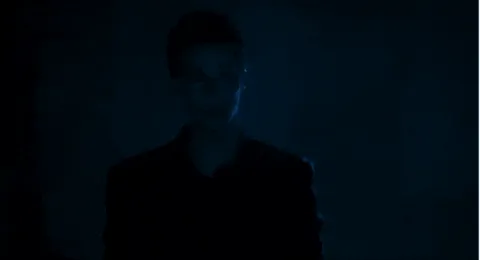Introduction
“The Man from Nowhere,” directed by Lee Jeong-beom and starring Won Bin and Kim Sae-ron, is a gripping South Korean action film that captivated audiences upon its release in 2010. Known locally as “Ajeossi” (meaning “Uncle”), the film garnered acclaim, winning awards at prestigious ceremonies like the Grand Bell Awards, Blue Dragon Film Awards, and Baeksang Arts Awards. It also became the highest-grossing film in South Korea that year.
The movie centers on Cha Tae-sik, played by Won Bin, a former special forces operative with a dark past. After a mission goes wrong, leading to the tragic loss of his wife and unborn child, he retreats from the world, living a solitary life as a pawnshop owner, earning him the moniker “Uncle.” His only connection is a young girl named So-mi, neglected by her own mother but resilient and kind-hearted. She finds solace in her friendship with the quiet, enigmatic “Uncle” next door.

Korean poster of “The Man from Nowhere”
When So-mi’s mother becomes entangled in a drug-related crime, So-mi is kidnapped by a ruthless gang. Tae-sik, driven by a fierce determination to save her, emerges from his self-imposed exile and wages war against the criminal underworld. As the police close in on him, Tae-sik must navigate a dangerous game of cat and mouse while racing against time to rescue So-mi.
Won Bin and Kim Sae-ron deliver powerful performances, and the film’s expertly choreographed action sequences are a thrill to watch. Ultimately, “The Man from Nowhere” is more than just a rescue mission; it’s a story about human connection, redemption, and the struggle between darkness and light.

A Lifeline of Hope: Finding Purpose in Connection
Haunted by the loss of his family, Tae-sik isolates himself, becoming a recluse. So-mi, ostracized and lonely, persistently seeks his attention, gradually breaking down his emotional barriers. When she is kidnapped and her life is threatened, Tae-sik is forced to confront the pain of his past.
So-mi becomes the closest thing to family he has left. The thought of losing her unleashes his dormant skills and a burning desire for revenge. Believing she is dead, he decimates the gang responsible. But when he is about to end his own life, So-mi reappears. Tae-sik saves So-mi, but in a profound way, So-mi also saves Tae-sik.
“The human spirit cannot be without something to which it clings.” – Zeng Guofan
In a world often characterized by isolation, many people experience loneliness. So-mi finds solace and connection in Tae-sik, while Tae-sik finds a renewed sense of purpose in protecting her. It is this connection that fuels his determination to rescue her and ultimately prevents him from taking his own life. When life has a purpose, the soul finds its place.

When individuals feel misunderstood, they can become isolated and vulnerable to negative influences. Having something to hold onto, whether it’s a person, a passion, or even an object, can provide direction and resilience in the face of adversity.

A Glimmer of Humanity: Redemption in the Darkest Corners
The film’s narrative is also shaped by the complex character of the assassin. From his first encounter with Tae-sik, he recognizes him as someone extraordinary. After witnessing Tae-sik’s skills, a sense of respect develops between them. This character defies simple categorization as “evil”; he is simply someone who works for the wrong people.

Living a life of violence and isolation, the assassin is untouched by compassion. However, when So-mi innocently places a bandage on his wound, a spark of humanity is ignited within him. This act of kindness awakens his conscience, leading him to rescue So-mi from the clutches of a sadistic doctor, paving the way for her reunion with Tae-sik.
Human nature is complex and multifaceted, defying simple labels of “good” and “evil.” Even those who commit wrongdoings may be capable of acts of kindness and redemption.
In “Schindler’s List,” Oskar Schindler, initially portrayed as a cunning and opportunistic businessman profiting from the war, undergoes a transformation. He uses his wealth to employ over 1,100 Jewish workers in his factory, saving them from the horrors of the Holocaust.
“Schindler’s List”
The world is rarely black and white. Many people exist in the gray areas, shaped by their circumstances and choices. When judging others, it’s important to look beyond appearances and consider the totality of their actions. Sometimes, a single opportunity can alter the course of a life. If everyone could tap into their inner humanity, the world would be a different place.
A Beacon of Hope: Embracing Light in the Darkness
“The rich kid who called me a beggar was worse than you, but I don’t hate you. If I hate you too, I won’t have anyone to like.” – So-mi, “The Man from Nowhere”
So-mi’s life is marked by neglect and hardship. Abandoned by her mother and surrounded by unsavory characters, she is treated as an outcast. Yet, despite her circumstances, she maintains a sense of optimism and resilience.
Her friendship with Tae-sik unlocks his heart, reminding him of the possibility of connection and giving him a reason to live.
Even in the midst of danger, she asks the assassin with unwavering hope, “If I behave, I’ll see my mom, right?” She places a cartoon bandage on his wound, melting his cold exterior with her innocence and kindness. So-mi guides Tae-sik and the assassin out of their emotional darkness, reminding them of their own humanity. In this sense, So-mi saves herself.

As the saying goes in “The Shawshank Redemption,” “Some birds aren’t meant to be caged, their feathers are just too bright.” Some people, regardless of their circumstances, refuse to succumb to darkness. Like So-mi, even after witnessing the worst of humanity, she clings to hope and light.
Conclusion
While often compared to the French film “Léon: The Professional,” “The Man from Nowhere” is more than just an action film. It’s a character-driven drama disguised as a thriller. The director focuses on the emotional and spiritual journeys of the characters, particularly the contrasting perspectives of Tae-sik and So-mi, leaving the audience to contemplate who truly saves whom.

The film is not without its flaws. The multiple storylines, while intended to provide depth, can feel somewhat unfocused. Additionally, Kim Sae-ron’s performance, while commendable for a child actor, occasionally feels repetitive.
Despite these minor shortcomings, “The Man from Nowhere” is a compelling film that explores the complexities of human nature through a story of redemption.